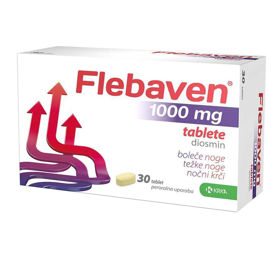Customer question:
Thrombosis and signs - what are they? How can I help myself with thrombosis? Anonymous Customer
Pharmacist's answer
When a blood clot develops in one of the body's deep veins, the condition is known as deep vein thrombosis or DVT. This can happen if the vein is damaged or the blood flow decreases or stops.
Although there are several risk factors for developing DVT, the most common causes are injury to the lower body and hip or leg surgery.
GVT, however, can cause serious health problems. A blood clot can enter the bloodstream and block blood flow to the lungs. Pulmonary embolism is rare but can be fatal when it occurs. In addition, a blood clot can permanently damage vein valves even if it doesn't dislodge. This injury can result from long-term foot problems such as discomfort, swelling, and leg ulcers.
Deep vein thrombosis often occurs without noticeable symptoms and is difficult to detect. Doctors, therefore, focus on preventing the development of DVT using different types of therapies, depending on the patient's needs. Your doctor will take steps to prevent a DVT if you have a significant fracture or lower limb surgery.
Symptoms of deep vein thrombosis:
- swelling of the leg or arm (sometimes this happens suddenly)
- pain or tenderness in the leg or arm
- the area of your leg or hand that is swollen or painful may be warmer than usual
- red or discolored skin
- veins close to the surface of your skin may be larger than normal
- pain in the abdomen or flank (when blood clots affect veins deep in the abdomen)
- severe headache (usually comes on suddenly) and seizures (when blood clots affect the blood vessels in the brain)
Health options
Treatment for deep vein thrombosis includes medications called anticoagulants (blood thinners), compression stockings, and elevating the affected leg at different times throughout the day. In a small number of cases where deep vein thrombosis is more severe, invasive treatment may be required. Excellent support at a time when the described problems are not yet problematic to the extent described above Detralex use.
To diagnose deep vein thrombosis, your doctor must discuss your symptoms and examine you for signs of a GVT, such as swelling and pain. If your doctor thinks you have DVT, he may suggest an ultrasound.
A blood test called a D-dimer test may also be done to help detect blood clots. If your doctor thinks there is a risk that part of the blood clot has traveled to your lungs, they may order a chest CT scan.
Interesting reading: Deep-vein-thrombosis
Interesting reading: Venous thrombosis legs images











